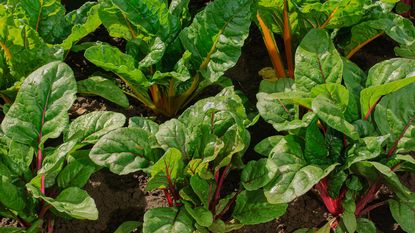Top 10 Plants Every Garden Should Have


When pondering the "top 10 plants every garden should have," I recognized that recommending 10 specific garden plants was leaning towards impractical because, let's face it, we all live in different climates. Instead, I viewed this more as, "What are the top 10 types of plants every garden should have." If you're looking to make your backyard more fun, interesting, visually dynamic, practical and more successful, read on to learn more. 1. Easy-to-care-for plants. Nothing takes the fun out of gardening more than plants that are labor intensive, unless you're into that sort of thing. If you lean towards the lazy side (like me), choose plants that are somewhat forgiving so you can avoid the avoidable plant funerals. Forgiving plants are ones that are labeled as 'drought' or 'heat' tolerant, for starters. Purple coneflower (USDA hardiness zone 3-9), for example, is considered to be very drought tolerant. 2. Plants that are appropriate. This may seem obvious to some but it bears repeating and is especially true for those of us ogling over a seed catalog, circling all the pretty "I got to have it"¦my precious" choices without facing the facts. And, let's be honest - we've all been there. Are you choosing a plant that needs full sun when your property is mostly shaded? Are you buying a plant rated for zone 8 when you live in zone 5? Just keeping it real... 3. Plants for every season. Every garden should have plants for every season. Spring, summer, fall, and winter should all be represented to keep the garden looking lively and interesting year-round. 4. Pollinator plants. Without getting onto a soapbox, it is vitally important that we help to create and maintain habitats for our pollinating friends - namely the bees, butterflies, hummingbirds, etc. Your plant options are plentiful when it comes to pollinator plants - butterfly bush, bee balm, and yarrow are just a few possibilities and they are very aesthetically pleasing. If everyone were to plant some of these plants, it would literally make a world of difference. 5. Edible plants. The benefits of growing your own food are widely documented. Not to mention that it's always good to be a little self-sustainable and have more control over the quality of foods you eat. I can tell you from experience that it's very satisfying to eat your own homegrown food and I feel it tastes much better. Also, many edible plants, such as rainbow chard and artichoke, are highly ornamental, adding visual interest to a landscape. Two for the price of one - who can argue against that? 6. Non-invasive plants. There's nothing worse than the headache of plants gone amuck in your garden. When selecting plants, do your homework. Make sure that the plant you are choosing does not have invasive tendencies. Bamboo instantly comes to mind as an invasive plant you should really think through. 7. Heirloom plants. By planting heirlooms, and by saving the seed from those heirlooms, you will be giving a nod to history and will be stewarding biodiversity into the future. 8. Big bang for your buck plants. If you're going to choose flowers, get ones that are going to stay awhile. Choose flowers that are prolific bloomers rather than ones that go out in a quick blaze of glory. 9. Plants that appeal to all the senses. When planning a garden, consider plants that appeal to just more than your sense of sight. With sensory gardens, you can add layers of interest to a garden space by adding plants that cater to our sense of smell, touch and hearing. 10. Plants that you enjoy. It's your garden so make it "you," not Martha Stewart. Be sure to choose plants that you enjoy and which speak to you personally. Do not fall prey to keeping up with the latest gardening trends.
Gardening tips, videos, info and more delivered right to your inbox!
Sign up for the Gardening Know How newsletter today and receive a free download of our most popular eBook "How to Grow Delicious Tomatoes."

Shelley Pierce was a writer for Gardening Know How, contributing to hundreds of articles for the site.
-
 Want a Backyard Mini Orchard? Create Your Own Container Orchard
Want a Backyard Mini Orchard? Create Your Own Container OrchardEasier to care for in small spaces, a backyard mini-orchard makes sense for busy gardeners and juicy fruit is the reward.
By Teo Spengler
-
 Urban Beekeeping Guide: Top Tips For Raising Bees In The City
Urban Beekeeping Guide: Top Tips For Raising Bees In The CityUrban beekeeping can be a rewarding and appreciated pastime, but first be sure it’s legal in your city and learn the ropes of beekeeping.
By Mary Ellen Ellis